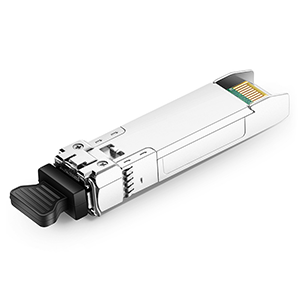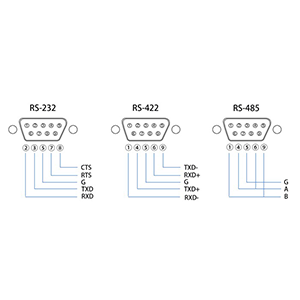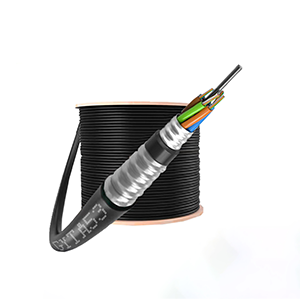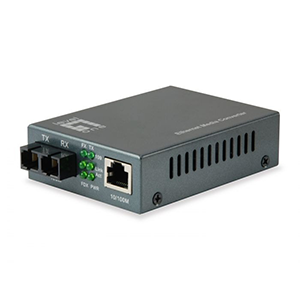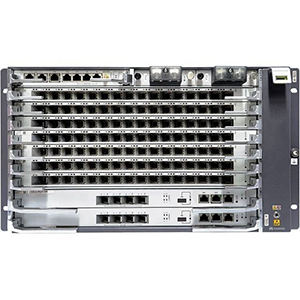In this article, I will take an in-depth look at the SFP module, a powerful fiber optic transmission device. We will introduce the definition, functions and application areas of SFP modules to help you understand its importance in modern networks.
As a pluggable fiber optic module, the SFP module has flexibility, high-speed data transmission and fiber optic interface conversion capabilities. Whether building network communications, data centers or the telecommunications industry, SFP modules play a key role. Let’s explore the wonderful world of SFP modules together!
What is SFP module
SFP (Small Form-Factor Pluggable) module is a miniaturized optical module used in optical fiber communications and network equipment. It is a pluggable optical module that can be easily replaced and upgraded in the device.
The main function of the SFP module is to realize optical fiber transmission and optical network connection. It allows the sending and receiving of optical signals, converts electronic signals into optical signals for transmission, and converts received optical signals back into electronic signals. SFP modules can support different transmission rates and transmission distances according to different transmission requirements.
The structure of an SFP module usually consists of the following components:
-
Shell: The shell of the SFP module is a miniaturized metal shell that protects the internal optical and electronic components and provides stable connection and plug-in functions.
-
Optical interface: The front end of the SFP module usually has an optical interface for connecting to the optical fiber. Common optical interface types include LC, SC, ST, etc. Choose the appropriate module according to different connector types.
-
Electronic interface: There is usually an electronic interface on the back of the SFP module for connection to the device’s electronic system. This interface transmits electronic signals, including data, control and monitoring signals.
-
Optical and electronic components: The SFP module contains optical and electronic components for transmitting and receiving optical signals. These components include laser diodes (LD) or light-emitting diodes (LED), photodiodes (PD), modems, electronic chips, etc.
The structure and components of the SFP module are designed to be flexible and pluggable, and can be easily connected and replaced with fiber optic equipment. Using SFP modules, users can choose appropriate module types and specifications according to actual needs to meet different transmission rate, distance and fiber type requirements.
Overview of SFP module types
There are many types of SFP modules, each type has different characteristics, data transmission rates and applicable scenarios. Here are some common SFP module types:
-
SFP (Small Form-Factor Pluggable): The SFP module is the most basic type and supports a data transfer rate of 1Gbps (gigabits per second). It is suitable for data transmission over shorter distances, such as local area networks (LANs) and intra-data center connections.
-
SFP+ (Enhanced Small Form-Factor Pluggable): The SFP+ module is an upgraded version of the SFP module and supports higher data transmission rates, usually 10Gbps. It provides higher bandwidth and performance for applications requiring high-speed data transfer, such as data center interconnects, server-to-server connections and storage area networks (SANs).
-
SFP28 (25G Small Form-Factor Pluggable): The SFP28 module is an optical module that supports 25Gbps. It is a further upgrade of the SFP+ module and can provide higher transmission rates and bandwidth. SFP28 modules are commonly used in high-density data center networks, cloud computing and hyperscale networks.
-
QSFP (Quad Small Form-Factor Pluggable): The QSFP module is a high-density optical module that can support 4 channels of data transmission at the same time. It can provide data transfer rates of up to 40Gbps or 100Gbps and is suitable for applications with high bandwidth requirements such as data center interconnect and high-performance computing.
-
QSFP+ (Quad Small Form-Factor Pluggable Plus): The QSFP+ module is an upgraded version of the QSFP module and supports higher data transmission rates, usually 40Gbps or 100Gbps. It provides higher bandwidth and density and is suitable for environments requiring high-speed data transmission and high-density connections.
Each type of SFP module has its specific uses and applicable scenarios. Selecting the appropriate module type depends on the required transmission rate, distance and application requirements. Depending on the actual situation, different types of SFP modules can be selected to meet different network needs, from 1Gbps to 100Gbps or even higher rates. It is important to ensure that the selected module is compatible with the device and network and meets the required performance and reliability requirements.
Overview of the functional advantages of the SFP module
SFP modules have a variety of functions and advantages, making them an important component in the field of fiber optic communications and networking. The following are the main features and advantages of the SFP module:
- Function:
-
Data transmission: SFP modules can convert electronic signals into optical signals and transmit them through optical fibers. It can support different transmission rates, from 1Gbps to 100Gbps or higher.
-
Fiber optic interface conversion: The SFP module provides different types of fiber optic interfaces, such as LC, SC, ST, etc. This allows users to easily connect different types of optical fibers to the device and realize interconnection between optical fibers.
-
Network expansion: By using SFP modules, users can expand the coverage and capacity of the network. SFP modules can be used to connect optical fiber links between different devices to achieve long-distance transmission and network expansion.
- Advantages:
-
Flexibility: SFP modules are highly flexible, and modules of different types and specifications can be selected according to actual needs. Users can adjust transmission rates, fiber types and distances based on network needs to meet specific application needs.
-
Plugability: The SFP module is pluggable and can be easily inserted and unplugged from the device’s slot. This pluggability makes module replacement and upgrades simple and fast, without having to replace the entire device.
-
Hot-swappability: SFP modules support hot-swappability, which means the module can be inserted or removed while the device is running without shutting down the device or interrupting the network connection. This provides convenient maintenance and upgrade options, reducing network downtime.
-
High density: Due to the miniaturized design of SFP modules, they can achieve high-density connections in network equipment. This is beneficial for environments with limited space, such as data centers, and applications that require a large number of connections.
-
Compatibility: SFP modules comply with international standards and therefore have broad compatibility. They can be used with various brands and models of network equipment, ensuring interoperability between devices.
Overall, the features and benefits of SFP modules make them an ideal choice in the field of fiber optic communications and networking. They provide flexibility, pluggability and hot-swappability, allowing users to quickly and easily build and maintain high-performance optical networks.
Overview of the application fields of SFP modules
SFP modules are widely used in various fields due to their flexibility, high-speed transmission and pluggability. The following are common applications of SFP modules in different fields:
-
Network communication: SFP module plays an important role in the field of network communication. They can be used in equipment such as Ethernet switches, routers, and fiber optic adapter boards to achieve high-speed data transmission and long-distance connections. SFP modules can be used in local area networks (LAN) and wide area networks (WAN) to meet different network needs.
-
Data center: SFP modules are widely used in data centers. Data centers require high bandwidth and high-density connections to support large-scale data transmission and cloud computing services. SFP+ and QSFP+ modules are commonly used in data center interconnects, server-to-server connections and storage area networks (SANs) to provide high-speed, reliable data transmission.
-
Telecommunications industry: SFP modules play an important role in the telecommunications industry. They can be used in applications such as optical transmission equipment, fiber optic access networks (FTTx), and optical transport networks (OTN). The pluggability and flexibility of SFP modules enable telecom operators to adjust transmission rates and distances according to needs to achieve efficient optical networks.
-
Video surveillance: SFP modules are also used in video surveillance systems. They can be used to connect fiber optic links between cameras and surveillance equipment, enabling high-speed video data transmission and long-distance transmission. The high bandwidth and stability of SFP modules ensure high-quality image transmission for video surveillance systems.
-
Military and aerospace fields: SFP modules are of great value in the military and aerospace fields. These fields have strict requirements for reliability, high bandwidth and anti-interference capabilities. SFP modules can be used in high-speed data transmission, communication systems and radar systems to ensure accurate transmission and reliability of data.
Practical application cases:
- In a large data center, SFP+ modules are used to connect servers and network switches to achieve high-speed data transmission and interconnection between servers.
- A telecom operator uses SFP modules to extend fiber access network (FTTx) to user homes. SFP modules provide flexible interface conversion and pluggability, making network expansion and maintenance simple and fast.
- In a surveillance system, use SFP modules to connect cameras and surveillance equipment. The SFP module provides high bandwidth and stable connection, ensuring high-quality transmission of video data and long-distance transmission.
These practical cases highlight the important role of SFP modules in different industries and applications. They provide flexibility, high-speed transmission and reliability for various applications to meet the needs of fiber optic communications in different fields.
SFP module installation and configuration overview
Installation and configuration of the SFP module are critical steps to ensure that it works properly and is connected correctly. Below is a basic guide to SFP module installation and configuration:
- Install SFP module:
-
Turn off the equipment: Before installing or replacing the SFP module, make sure that the relevant equipment has been turned off or powered off.
-
Find the SFP slot according to the device type: Find the corresponding SFP slot according to the device type (such as switch, router, etc.). Typically, these slots are located on the back or front panel of the device.
-
Check the fiber interface type: According to the required fiber interface type (such as LC, SC, etc.), select the corresponding SFP module and ensure that its fiber interface corresponds to the device slot.
-
Insert the SFP module: Gently insert the SFP module into the device’s SFP slot, making sure the plug is properly aligned with the slot and applying appropriate, even pressure.
- Plugging and unplugging SFP modules:
-
Turn off the equipment: Before plugging or removing the SFP module, be sure to turn off the relevant equipment or cut off the power to ensure safe operation.
-
Disconnect the optical fiber connection: If the SFP module is already connected to other devices, disconnect the optical fiber connection first to ensure that no optical fiber is connected to the module.
-
Press the plug-in switch: There is usually a plug-in switch on the SFP slot. Press the switch gently to pop out the SFP module.
-
Insert or replace an SFP module: Insert the new SFP module into the slot, making sure the plug is properly aligned with the slot and applying appropriate, even pressure so that it is fully inserted.
- Configure fiber interface:
-
Connect the optical fiber: After inserting the SFP module, connect the optical fiber to the optical fiber interface of the SFP module. Make sure the fiber connections are secure and avoid bending or twisting.
-
Check the fiber interface settings: In the configuration interface of the relevant device, check the fiber interface settings and make sure they match the SFP module and fiber type used.
-
Adjust the optical fiber interface: According to actual needs, some adjustments to the optical fiber interface may be required, such as optical fiber transceiver power, receiving sensitivity, etc. These settings can usually be made in the device’s management interface or command line interface.
-
Test the connection: After the configuration is completed, perform a connection test to ensure the normal operation of the SFP module and optical fiber interface. You can use optical power meters, optical time domain reflectometers and other tools for testing.
Please note that specific installation and configuration steps may vary based on device type and manufacturer. Therefore, before proceeding with installation and configuration, it is recommended to refer to the user manual of the relevant device or the guide provided by the manufacturer for accurate steps and instructions.
SFP module performance monitoring and troubleshooting
Performance monitoring and troubleshooting of SFP modules is aThe key to ensuring its normal operation and solving problems in a timely manner. The following are methods and techniques for SFP module performance monitoring and troubleshooting:
- Performance monitoring methods and tools:
-
Optical power detection: Use an optical power meter to measure the transmit power and receive power of the SFP module. Compare to device and module specifications to ensure power is within normal range.
-
Error count monitoring: Use a network analyzer or device log to monitor the error count of the SFP module, such as frame errors, packet loss, etc. Unusual error counts may indicate a problem with the module.
-
Connection status check: Check the connection status of the SFP module through the device management interface or command line interface. Make sure the module is recognized and shows a normal connection.
-
Temperature monitoring: Some devices provide the temperature monitoring function of the SFP module. Check the module’s temperature to make sure it is within safe operating ranges.
- Troubleshooting tips and solutions:
-
Clean the fiber optic interface: Clean the fiber optic interface of the SFP module regularly to remove dust, grease or dirt. Use professional fiber optic cleaning tools and avoid using wet cloths or chemical solvents.
-
Check fiber optic connections: Check whether fiber optic connections are loose or damaged. Reseat the fiber and make sure the connection is secure.
-
Replace the SFP module: If there is a problem with the SFP module after inspection and testing, consider replacing it with a new module. Make sure you are using the correct model and specification of module that is compatible with your device.
-
Firmware upgrade: If the SFP module has compatibility issues or known firmware errors, try to upgrade the device’s firmware or the SFP module’s firmware. Make sure to use the correct version from the manufacturer.
-
Adjust optical fiber parameters: Adjust the parameters of the optical fiber interface as needed, such as optical fiber transceiver power, receiving sensitivity, etc. Compare with device and module specifications to ensure parameters are set correctly.
-
Contact the supplier: If the above methods cannot solve the problem, it is recommended to contact the supplier of the SFP module or the equipment manufacturer to seek their support and suggestions.
Please note that specific performance monitoring methods and troubleshooting techniques may vary based on device type, manufacturer, and network environment. Before performing performance monitoring and troubleshooting, it is recommended to refer to the user manual of the relevant device, documents provided by the manufacturer, or seek professional help to obtain accurate guidance and solutions.
Overview of SFP module development trends
SFP module (Small Form-Factor Pluggable) is a miniaturized optical module used to transmit data and signals. The following is an introduction to the development history of SFP modules, current technology trends, future development directions and innovative application fields:
- Development history and current technology trends:
-
History: The SFP module first appeared in 2001 as the successor of the GBIC (Gigabit Interface Converter) module. GBIC modules are larger and consume higher power, while the miniaturized design of SFP modules allows them to fit into more compact equipment layouts and consume lower power.
Technology trends: With the increase in network bandwidth requirements and the development of data centers, SFP modules have experienced the following technology trends:
-
Rate upgrade: The rate of SFP modules has gradually increased from the initial 1Gbps to 10Gbps, 25Gbps, 40Gbps and 100Gbps, and in some cases has exceeded 100Gbps.
-
Multi-mode and single-mode support: The SFP module not only supports multi-mode fiber (MMF), but also single-mode fiber (SMF). As the need for cross-data center connectivity and long-distance transmission increases, SFP module support for single-mode fiber becomes even more important.
-
High density and compactness: In order to adapt to high-density equipment and rack layout, the design of SFP modules tends to be smaller and more compact, such as SFP+, QSFP (Quad Small Form-factor Pluggable), etc.
-
Low power consumption and high performance: With the focus on green data centers and energy efficiency, the power consumption of SFP modules is also continuously reduced to provide higher energy efficiency and performance.
-
- Future development directions and innovative application areas:
-
Higher rates: As network demands increase, SFP modules will continue to develop towards higher rates, such as 400Gbps, 800Gbps or even higher. This will provide greater bandwidth support for areas such as large-scale data centers, cloud computing, 5G and the Internet of Things.
-
All-optical network: All-optical network is a development trend, using optical fiber as the main transmission medium. SFP modules play an important role in realizing all-optical networks, providing optical fiber interfaces and optical transmission functions.
-
Low power consumption and high density: Future SFP modules will continue to pursue lower power consumption and higher density. By using new materials, packaging technologies and design methods, SFP modules can provide higher port density in a smaller size.
-
Marginalization of optical fiber communications: With the rise of edge computing, the application of SFP modules on edge devices and edge nodes will become more important. This will provide more reliable, high-speed fiber optic connections for the Internet of Things, smart cities, industrial automation and other fields.
-
Innovative application fields: The miniaturization and flexibility of SFP modules give them innovative potential in various application fields, including virtual reality, augmented reality, high-performance computing, medical equipment, and military communications.
SFP modules have experienced technology trends such as rate upgrades, multi-mode and single-mode support, high density and compactness, low power consumption and high performance in the past few years. In the future, SFP modules will continue to develop, including higher speeds, all-optical networks, low power consumption and high density, edge applications, and innovative application areas. These developments will promote the application and performance improvement of SFP modules in data centers, communication networks and various industries to meet the growing bandwidth needs and innovative application requirements.
Overview of this article:
Thank you for reading our blog! Through the introduction of this article, you will have a deeper understanding of the definition, functions and application areas of the SFP module. As a pluggable fiber optic module, SFP module plays an important role in modern networks.
Whether it is fast data transmission, fiber optic interface conversion or network expansion, SFP modules have excellent performance and flexibility. We provide high-quality SFP modules to meet your needs for building efficient and reliable networks.
By choosing our products, you gain the advantages of high-speed data transfer, pluggable design and hot-swappable capabilities. Whether it is network communications, data centers or telecommunications industries, SFP modules are your ideal choice!
SFP Module FAQ
The purpose of an SFP module is to enable flexible and modular connectivity in networking devices. It allows for easy customization and scalability by supporting different network protocols and transmission media.
There are various types of SFP modules available, including SFP, SFP+, and SFP28. Each type supports different data rates, with SFP supporting up to 1 Gbps, SFP+ supporting up to 10 Gbps, and SFP28 supporting up to 25 Gbps.
An SFP module works by converting electrical signals into optical signals for transmission over fiber-optic cables or by converting electrical signals for transmission over copper cables. It consists of transmitters and receivers that facilitate bidirectional communication between networking devices.
Yes, SFP modules are designed to be hot-swappable, which means they can be inserted or removed from compatible networking devices without powering them down. This feature allows for easy installation, replacement, and reconfiguration of network connections.
Yes, SFP modules are available for both fiber-optic and copper connections. Fiber SFP modules use optical transceivers for transmitting data over fiber-optic cables, while copper SFP modules utilize electrical transceivers for transmitting data over copper cables.
The maximum distance supported by SFP modules depends on the type of module and the transmission medium used. Fiber-optic SFP modules can support distances ranging from a few meters to several kilometers, while copper SFP modules typically have shorter reach, up to a few hundred meters.
In most cases, SFP modules are interchangeable between networking equipment that supports the same interface standard. However, it’s important to check the compatibility and specifications of the SFP module and the networking equipment to ensure proper functionality.
Yes, SFP modules can support various network protocols, including Ethernet, Fibre Channel, SONET/SDH, and others. They can be programmed or configured to operate with specific protocols based on the requirements of the network.
SFP modules are typically installed by inserting them into the appropriate SFP slots on networking devices, such as switches or routers. The modules should be aligned correctly and gently pushed until they click into place. It’s important to follow the manufacturer’s guidelines for proper installation and handling procedures.
SFP Module Related Products
-
25G SFP28 1310nm 10km LC Optical Transceiver Module
-
25G SFP28 1310nm 30km LC Optical Transceiver Module
-
25G SFP28 850nm 100m LC Optical Transceiver Module
-
25G SFP28 850nm 300m LC Optical Transceiver Module
-
25G SFP8 1300nm 80km LC Optical Transceiver Module
-
25G SFP8 1310nm 40km LC Optical Transceiver Module

